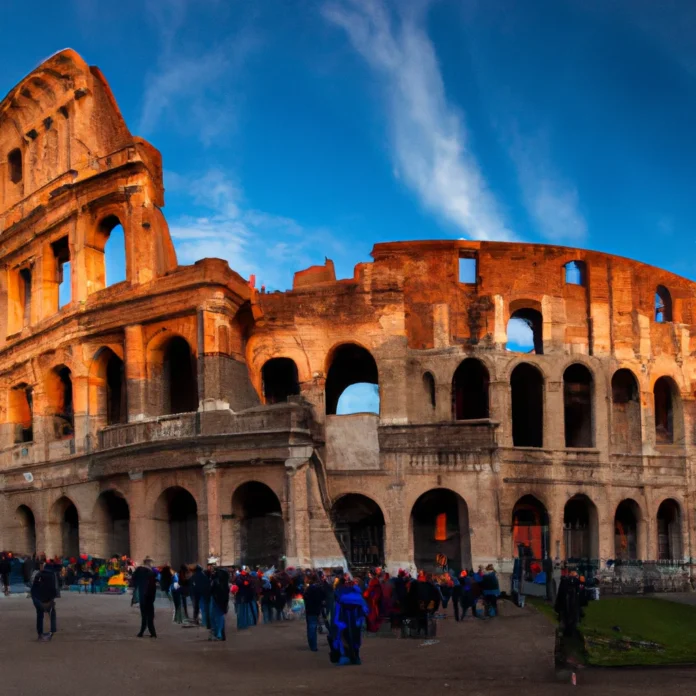Expert Guided Tour of Colosseum Arena OR Underground, and Forum
The Colosseum, an iconic symbol of ancient Rome, offers visitors a glimpse into the grandeur of a bygone era. This article presents a comprehensive guide to the Colosseum, focusing on the arena, underground chambers, and the Roman Forum. We will provide insights on how to maximize your visit and understand the historical significance of these sites.
The Colosseum: An Architectural Marvel
Constructed in AD 70-80, the Colosseum stands as a testament to Roman engineering prowess. The amphitheater could hold up to 80,000 spectators, showcasing a variety of events including gladiatorial contests and public spectacles. Its elliptical structure measures 189 meters in length and 156 meters in width, making it the largest amphitheater ever built.
The Arena: Heart of the Action
The arena of the Colosseum is where the action took place. It was designed with a wooden floor covered in sand, which absorbed the blood shed during the games. The term “arena” itself comes from the Latin word ‘harena’, meaning sand. Visitors can now access a section of the arena, allowing them to stand where gladiators once fought.
What to Expect in the Arena
During your guided tour of the arena, you will learn about the various types of events that took place here. From staged naval battles to wildlife hunts, the arena was a hub of entertainment for the Roman populace. Guides provide detailed narratives about specific events and the lives of the gladiators, bringing the history to life.
The Underground Chambers: A Glimpse Below
The underground sections of the Colosseum, known as the hypogeum, consist of a complex network of tunnels and chambers. This area was crucial for the operation of the games, allowing for the storage of animals and the preparation of gladiators before they ascended to the arena.
Significance of the Hypogeum
The hypogeum featured trapdoors and elevators that enabled the dramatic entrance of gladiators and animals. Its intricate design reflects the advanced engineering skills of the Romans. Exploring the underground chambers provides an insightful perspective on how events were orchestrated and the logistical challenges faced by organizers.
The Roman Forum: The Heart of Ancient Rome
Adjacent to the Colosseum lies the Roman Forum, once the center of public life in ancient Rome. This sprawling complex housed temples, marketplaces, and government buildings, serving as a hub for political, social, and economic activities.
Key Sites within the Forum
The Forum is home to several significant ruins, including:
- Temple of Saturn: A key religious site dedicated to the god Saturn, symbolizing the wealth and power of Rome.
- Basilica Julia: A grand structure that served as a venue for legal proceedings and public meetings.
- Arch of Titus: A triumphal arch commemorating the victories of Emperor Titus, showcasing the architectural style of the time.
Visiting the Forum allows for an understanding of the social dynamics and political climate of ancient Rome, making it an essential part of your journey.
How to Book on Viator
Booking your guided tour of the Colosseum and the Roman Forum is simple. We recommend using Viator, a reliable platform for travel experiences. To secure your spot, visit the following link: Book on Viator.
Tips for Visiting the Colosseum and Forum
To make the most of your visit, consider the following tips:
- Book in Advance: Tours often sell out, especially during peak seasons. Booking in advance ensures you secure your desired time slot.
- Wear Comfortable Shoes: The terrain can be uneven, and you will be walking extensively through the ruins.
- Stay Hydrated: Bring a water bottle, as exploring the Colosseum and Forum can be physically demanding.
- Consider a Guided Tour: A knowledgeable guide can greatly enrich your experience with historical context and stories.
Conclusion
The Colosseum and Roman Forum stand as monumental reflections of ancient Roman culture and history. By participating in a guided tour of these iconic sites, you will gain invaluable insights into the past. For a seamless booking experience, make sure to visit Izase for additional travel tips and resources. This journey through history is not one to be missed.
Disclaimer: This information is accurate to the best of our knowledge; however, there may be changes or mistakes. Please verify exact details on the Viator booking page.


